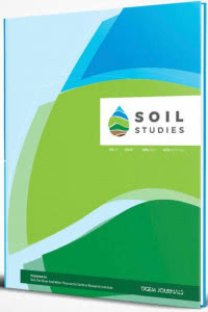Hayvansal Üretim Açısından Su Kalitesi ve İki Yönlü Etkileri
Water Quality and Two-Way Effects in Terms of Animal Production
Animal density, , livestock unit, , water quality, water pollution,
___
- Adams RS, Sharpe WE (1995). Water intake and quality for dairy cattle. Penn State Extension, Publ. 95-8. 11.08.2020
- Anonymous (2014). Farm Water Quality Considerations. New Nouveau Brunswick Canada. https://www2.gnb.ca/. 20.11.2018.
- Anonymous (2020a). Province and district areas. https://www.harita.gov.tr/il-ve-ilce-yuzolcumleri. 01.08.2020.
- Anonymous (2020c). Interpreting drinking water tests for dairy cows. https://extension.psu.edu/interpreting-drinkingwater-tests-for-dairy-cows. 11.08.2020.
- ANZECC (2000). Australian and New Zealand guidelines for fresh and marine water quality volume 1. The Guidelines. No: 4. www.waterquality.gov.au. 11.08.2020.
- Bagley CV, Amacher JK, Poe KF (1997). Analysis of water quality for livestock. https://digitalcommons.usu.edu. 20.11.2018.
- Beede DK (1993). Water nutrition and quality for dairy cattle. Western large herd management conference. Las Vegas Nevada-USA. http://agebb.missouri.edu.10.10.2018.
- Beede DK (2006). Evaluation of water quality and nutrition for dairy cattle. High Plains Dairy Conference. Albuquerque, NM. pp 129-154.
- Beede DK. 2012. What will our ruminants drink? Animal Frontiers 2: 36-43.
- Beede DK (2008). Evaluation of Water Quality and Nutrition for Dairy Cattle. Bucknell Nutrition Conference, Lewisburg, PA, July 15, 2008.
- Braul L, Kirychuk B (2001). Water quality and cattle. Prairie Farm Rehabilitation Administration, Agriculture and Agri-Food Canada, October 2001, pp.1-6.
- Cammack KM, Austin KJ, Olson KC, Wright KL (2012). Treatment of High-Sulfate Water used for Livestock Production Systems. Final Report. www.uwyo.edu/pdf. 12.10.2018.
- Can ME, Alagöz T (2014). Effects of livestock manure obtained from cattle breeding enterprises on shallow groundwater in Adana province. Çukurova Üniversity Journal of the Faculty of Engineering and Architecture. 31 (3): 13-22.
- Carpenter SR, Caraco NF, Correll DL, Howarth RW, Sharpley AN, Smith VH (1998). Non-Point Pollution of Surface Waters with Phosphorus and Nitrogen. Ecological Applications. 8 (3): 559-568.
- Carson L (2000). Current knowledge of water quality and safety for livestock. Veterinary Clinics of North America: Food Animal Practice. 16:3, November-2000.
- Çayır M, Atılgan A, Öz H (2012). Examinations of manure condition from cattle barns related to water resources. Journal of the Faculty of Agriculture, Süleyman Demirel Üniversity. 7 (2):1-9.
- Demirulus H, Aydın A (1996). Reducing enviromental pollution by processıng of poultry by products and wastes. Ekoloji Çevre Dergisi, 19: 22-26.
- Dida MF (2017). Review paper on determining stocking rate in tropical countries by the use of tropical animal unit month (Taum). International Journal of Microbiology and Biotechnology. 2 (1): 48-51. doi: 10.11648/jijmb.20170201.19.
- EUROSTAT (2020). Agri-environmental indicator - livestock patterns. https://ec.europa.eu/eurostat/statistics. 11.08.2020.
- FAO (2011). Guidelines for the preparation of livestock sector reviews. Animal Production and Health Guidelines. No. 5. Rome.
- Fairchild BD, Ritz CW (2020). Poultry drinking water primer. UGA Extension Bulletin 1301. https://secure.caes.uga.edu. 11.08.2020.
- German D, Thiex N, Wright C (2008). Interpretation of water analysis for livestock suitability. https://erams.com/pdf.11.08.2020.
- Göncü-Karakök S, Özkütük K, Görgülü M (2008). Sığır yetiştiriciliğinde su gereksinimi ve içme suyu kalitesi. Hasad Hayvancılık. 279: 44-51.
- Harris BL, Hoffman DW, Mazac FJ (1996). Reducing the risk of ground water contamination by improving livestock holding pen management. Texas Agricultural Extension Service, College Station, Texas. 11.08.2020
- Hooda PS, Edwards AC, Andeson HA, Miller A (2000). A review of water quality concerns in livestock farming areas. The Science of the Total Environment 250: 143-167.
- Karaman S (2006). Environmental pollutions caused by animal barns and solution possibilities. KSU, Journal of Science and Engineering. 9: 133-139.
- Kocaman İ, İstanbulluoğlu A, Kurç HC, Öztürk G (2015). Investigation of environmental problems in farms caused by animal wastes in agribusiness of Edirne-Uzunköprü region. Journal of Tekirdağ Agricultural Faculty. 12 (2): 92-98.
- Lardy G, Stoltenow C, Johnson R (2008). Livestock and water. North Dakota State University Extension Service, Fargo, North Dakota 58105. June 2008. 11.08.2020
- Oenema O (2005). Governmental policies and measures regulating nitrogen and phosphorus from animal manure in European Agriculture. Journal of Animal Science, 82: 13.
- Olkowski AA (2009). Livestock water quality, A field guide for cattle, horses, poultry and swine. Agriculture and Agri-Food, Canada.
- Öztürk İ, Ünal HB (2011). Evaluation of Manure Management in Dairy Cattle Farms: The Case of İzmir - Tire (Turkey) Region. Kafkas Unv. Veteriner Fakültesi D. 17 (5):741-747.
- Parish J (2020). Quality water for beef cattle. https://extension.msstate.edu/. 11.08.2020.
- Sangodoyin AY, Ogedengbe K (1991). Subsurface water quality and quantity from the standpoint of irrigation and livestock, International Journal of Environmental Studies, 38:4, 251-262.
- Smith KA, Frost JP (2000). Nitrogen excretion by farm livestock with respect to land spreading requirements and controlling nitrogen losses to ground and surface waters. Part 1: cattle and sheep. Bioresource Technology 71 (2): 173‐181.
- TUIK (2020). Animal production statistics. https://biruni. tuik.gov.tr. 11.08.2020.
- Valente-Campos S, Spry DJ, Palhares JCP, Rudez LMJ, Umbuzeiro GA (2019). Critical issues and alternatives for the establishment of chemical water quality criteria for livestock. Regulatory Toxicology and Pharmacology, 104: 108-114.
- Waldner DN, Looper ML (2020). Water for dairy cattle. Oklahoma Cooperative Extension Service. ANSI-4275. Available. https://www.landcan.org/pdfs.
- Wright CL (2007). Management of water quality for beef cattle, Veterinary Clinics of North America: Food Animal Practice, 23: 1, https://doi.org/10.1016/j.cvfa.2006.12.002.
- ISSN: 2146-7072
- Yayın Aralığı: 2
- Yayıncı: Toprak Gübre ve Su Kaynakları Merkez Araştırma Enstitüsü
Sodyumlu Sulama Sularının Toprak Tuzluluk Değişimine Etkisi
Ayşe ERTAŞ PEKER, Hasan Sabri ÖZTÜRK
Qutaiba ABDULWAHHAB, Cevdet ŞEKER
Aişe DELİBORAN, Muzaffer SAVRAN, Özgür DURSUN, Onder ERALP, Tülin PEKCAN, Hatice TURAN, Erol AYDOĞDU, İdris ÇILGIN, Handan ATAOL ÖLMEZ, Şule SAVRAN, Ferişte ÖZTÜRK GÜNGÖR, Ayşen YILDIRIM, Abdullah Suat NACAR
Hayvansal Üretim Açısından Su Kalitesi ve İki Yönlü Etkileri
Standart Yağış İndeksi Yöntemi ile Güneydoğu Anadolu Bölgesinde Kuraklık Analizi
